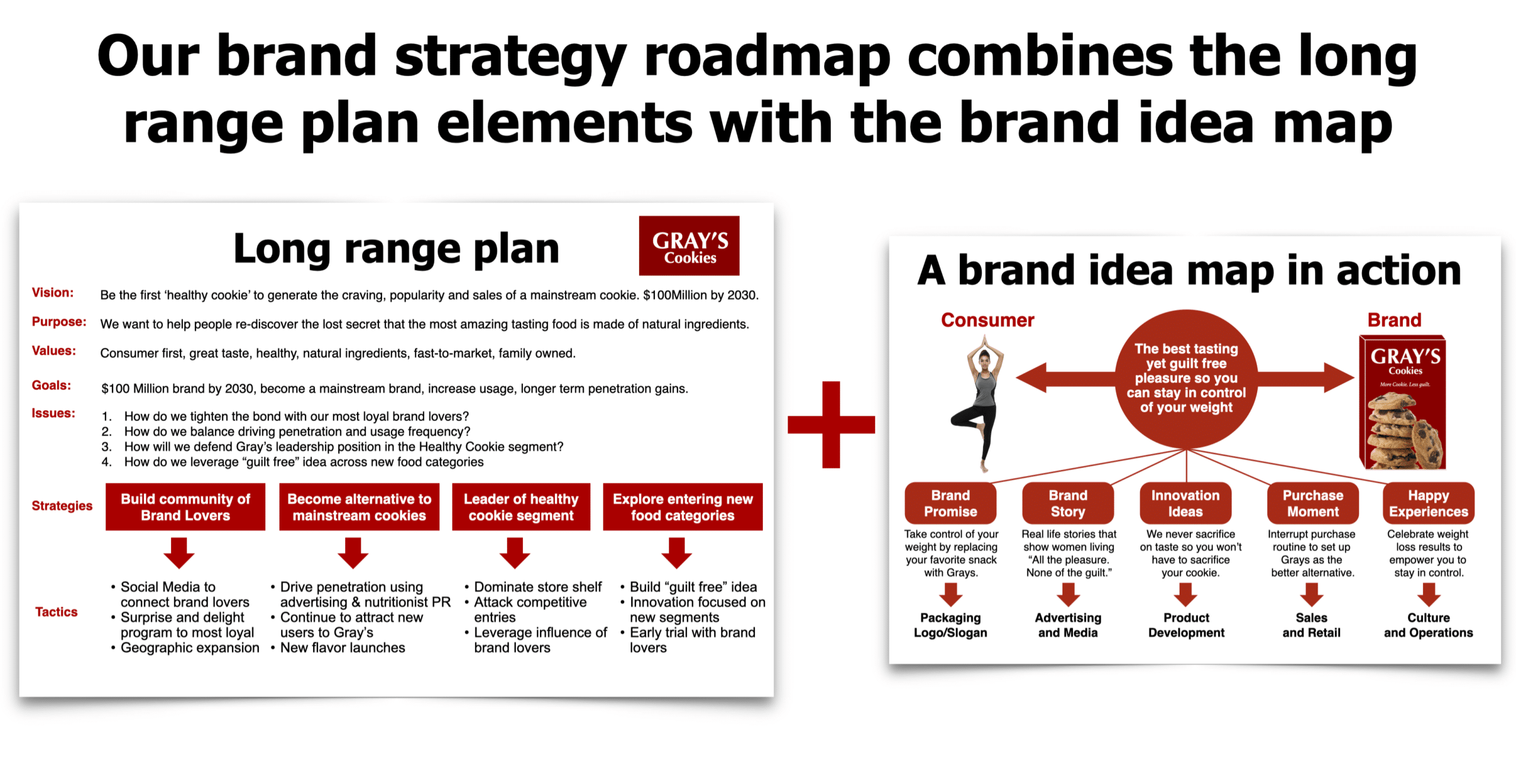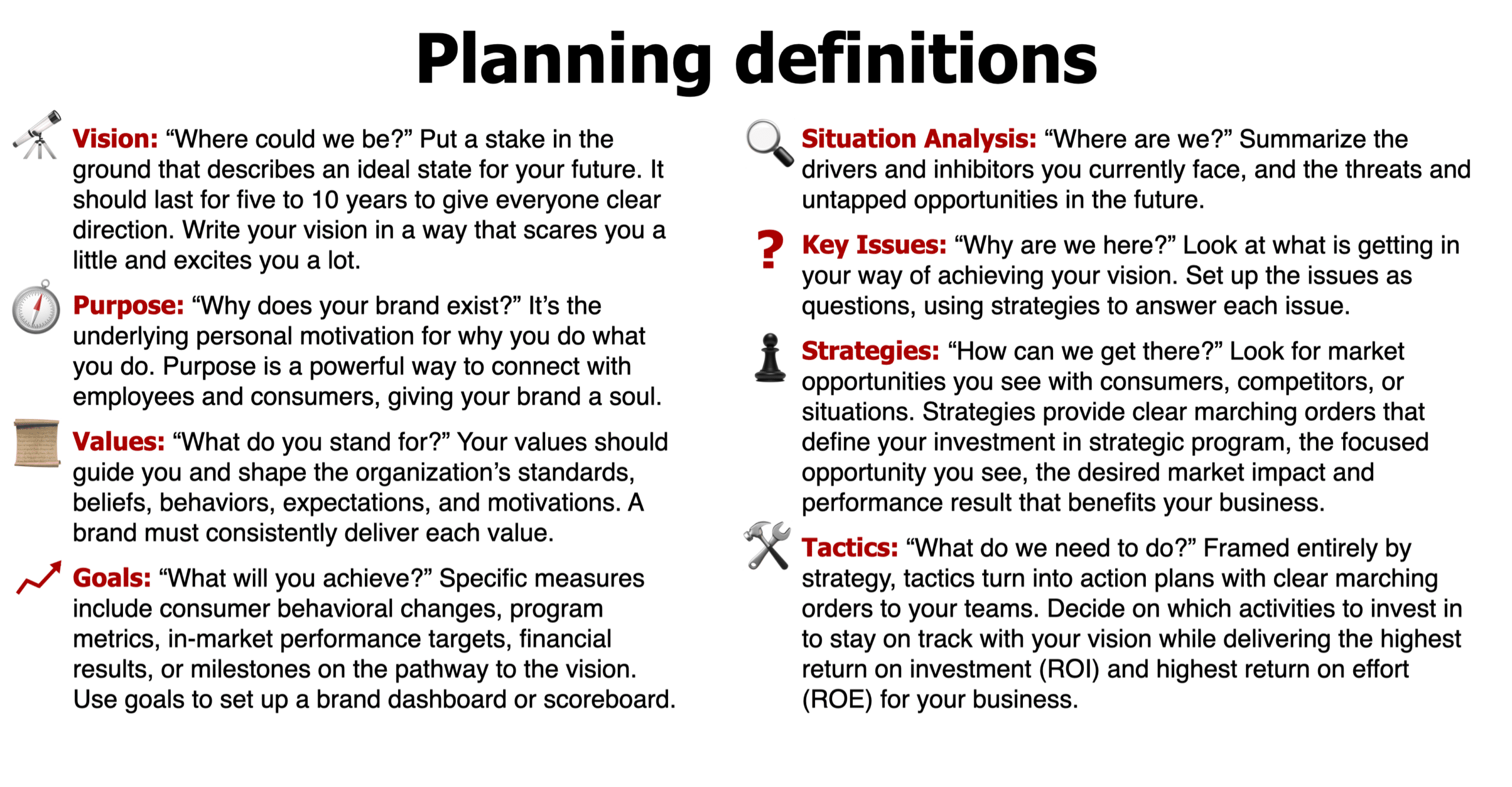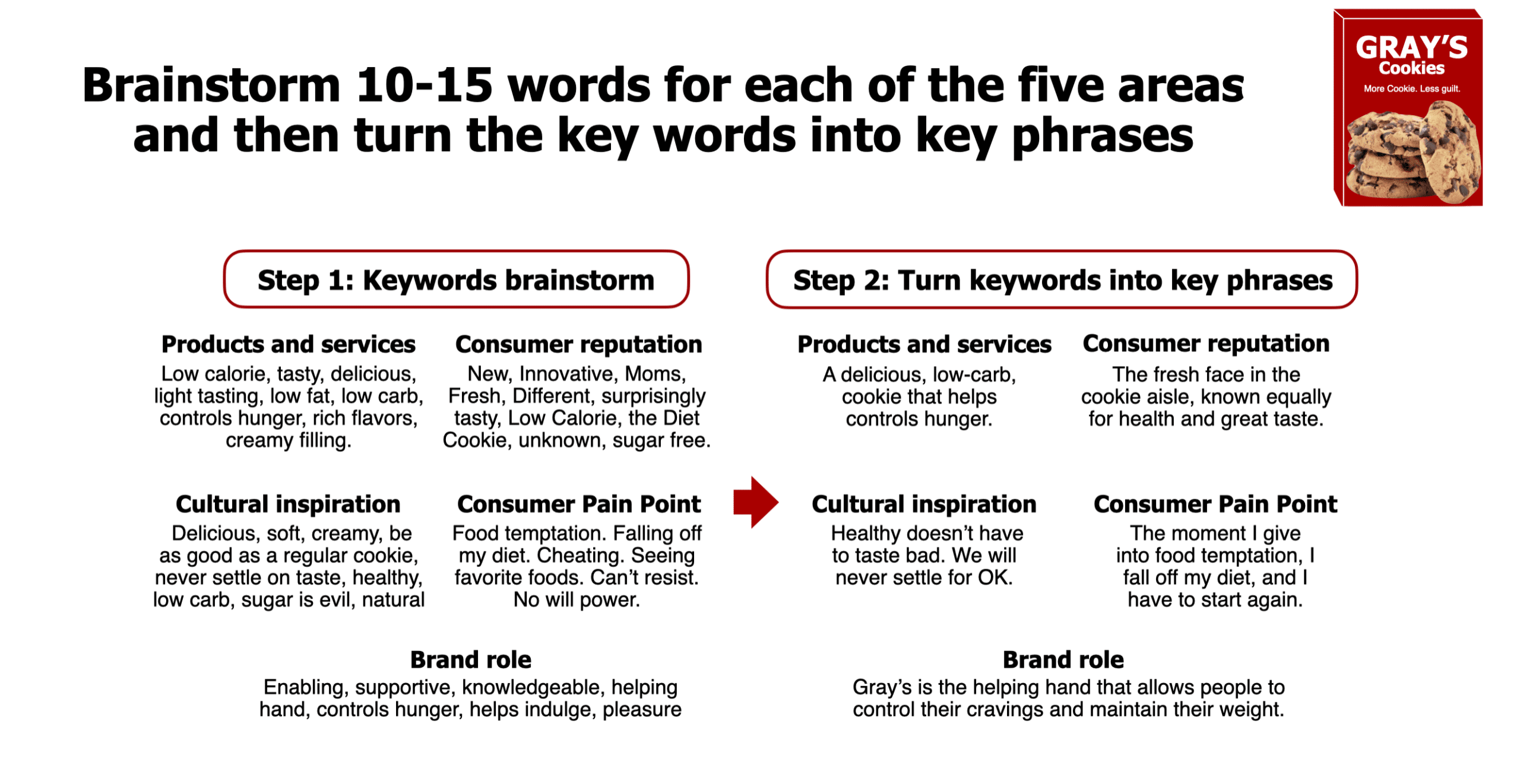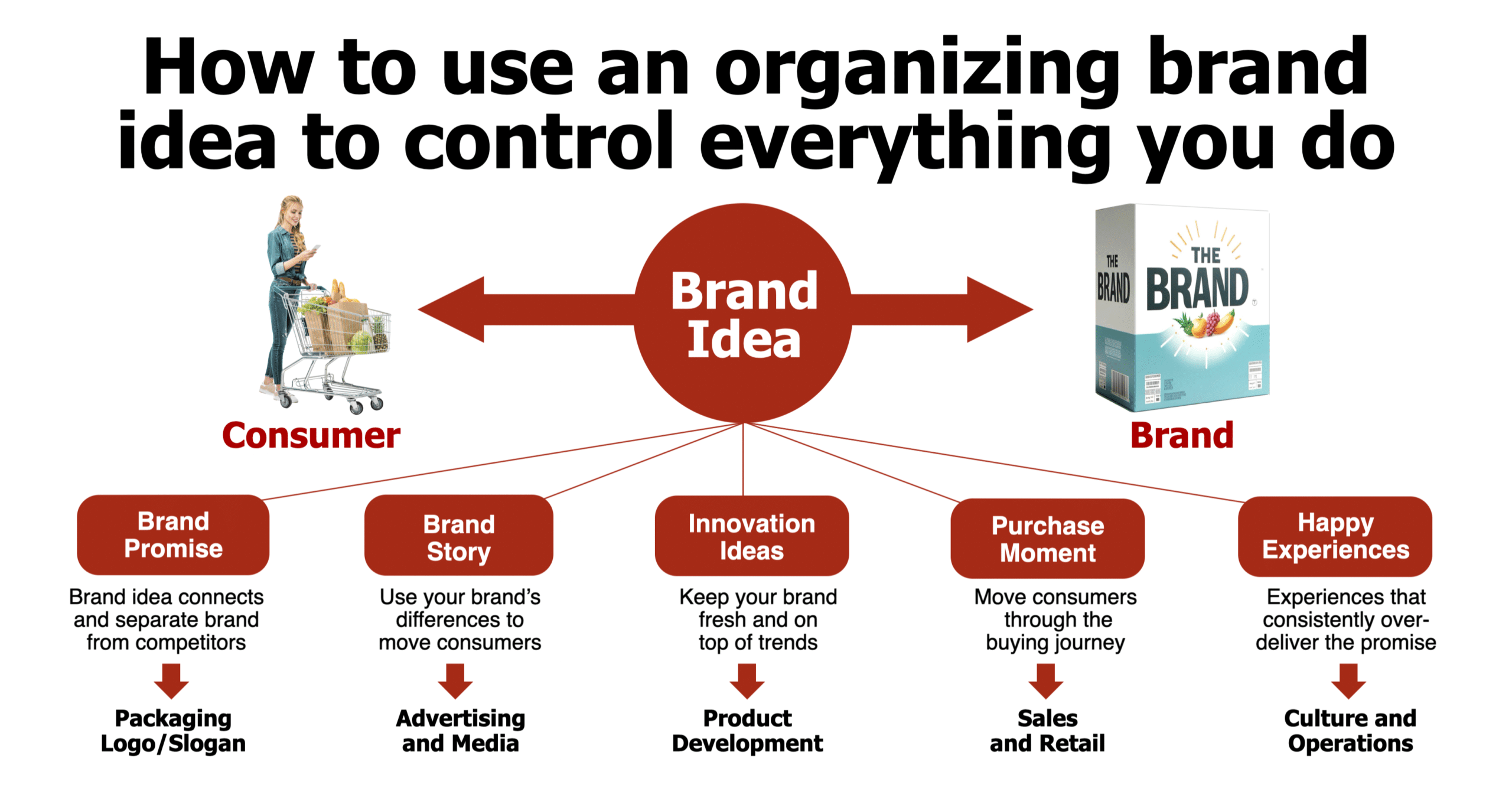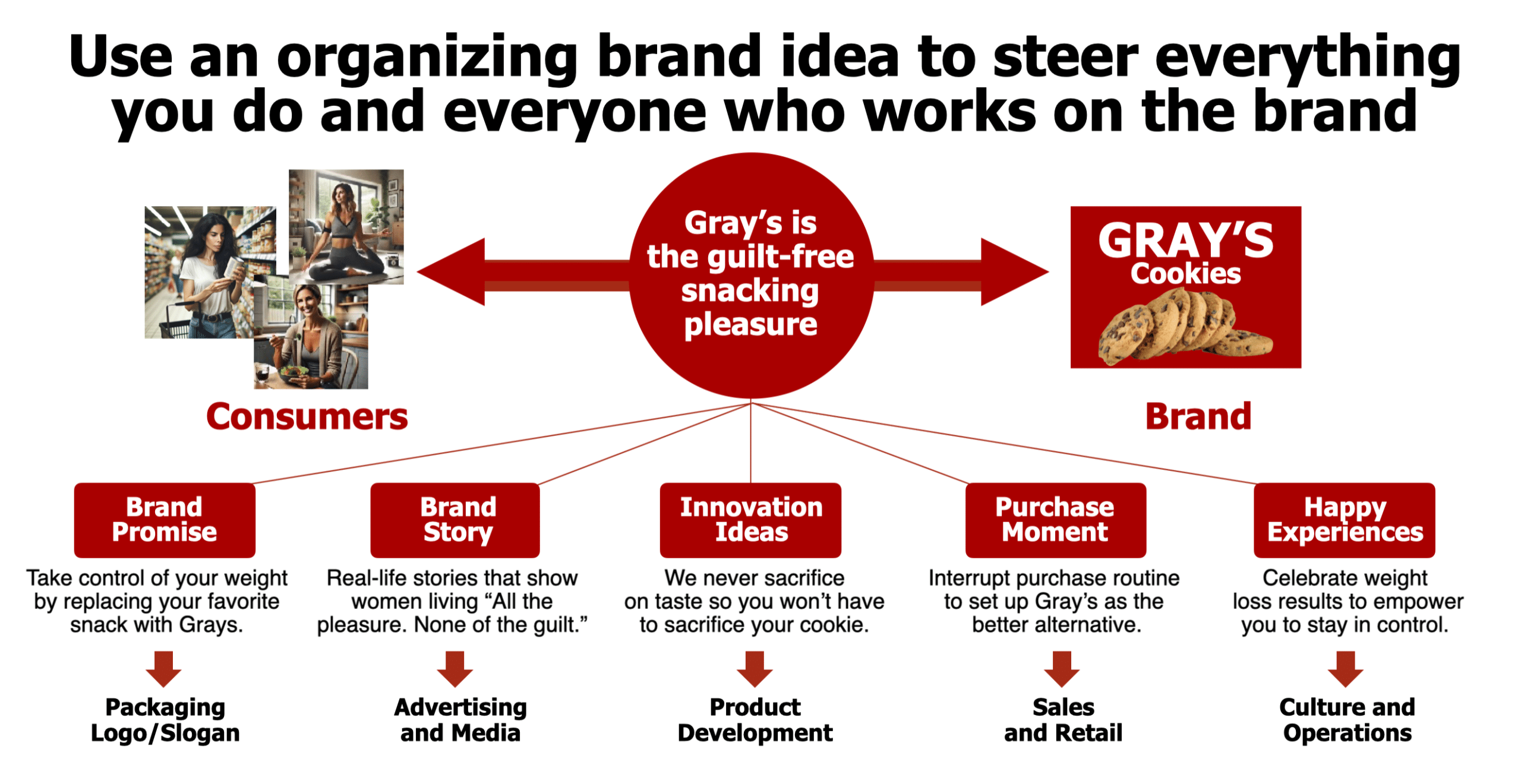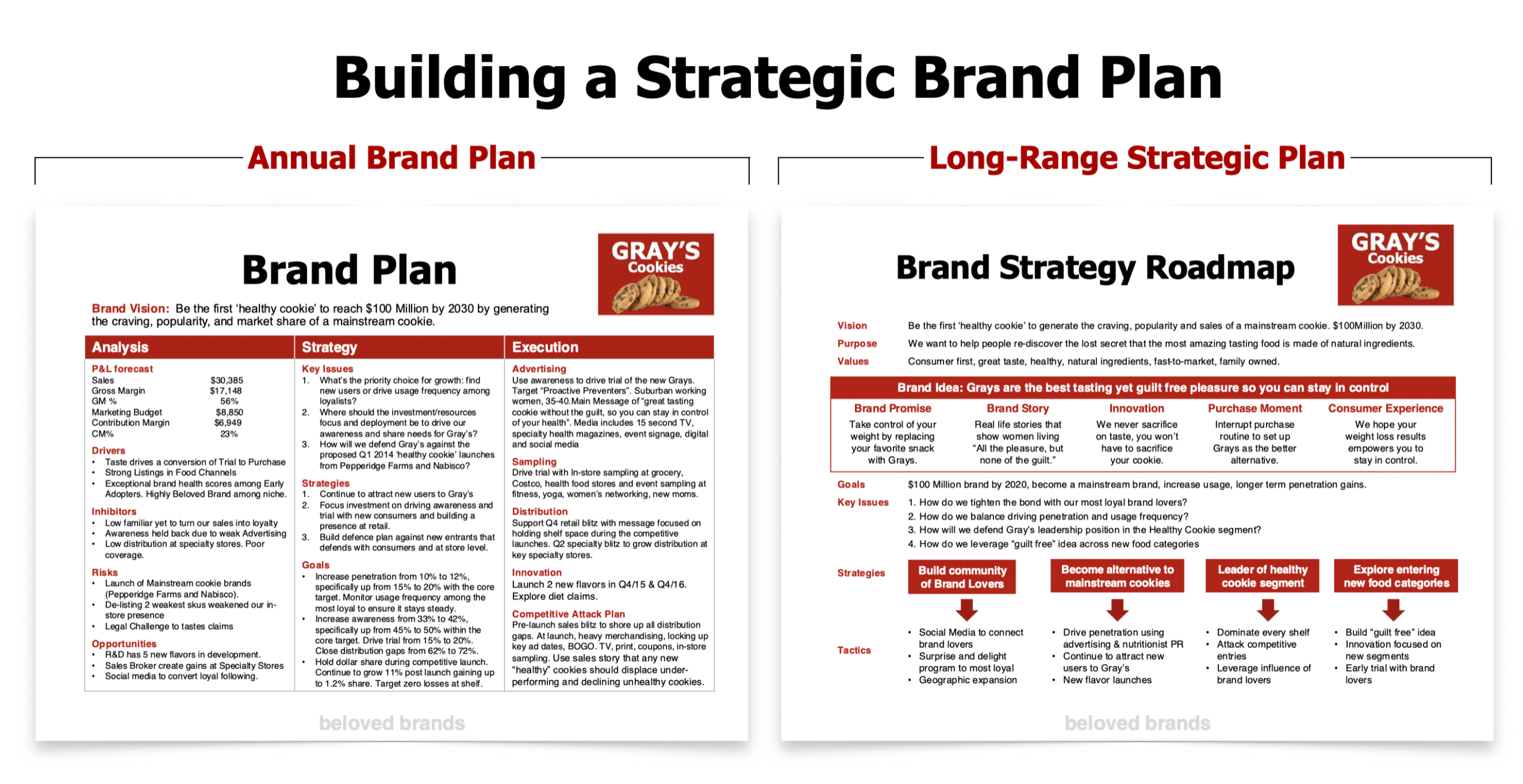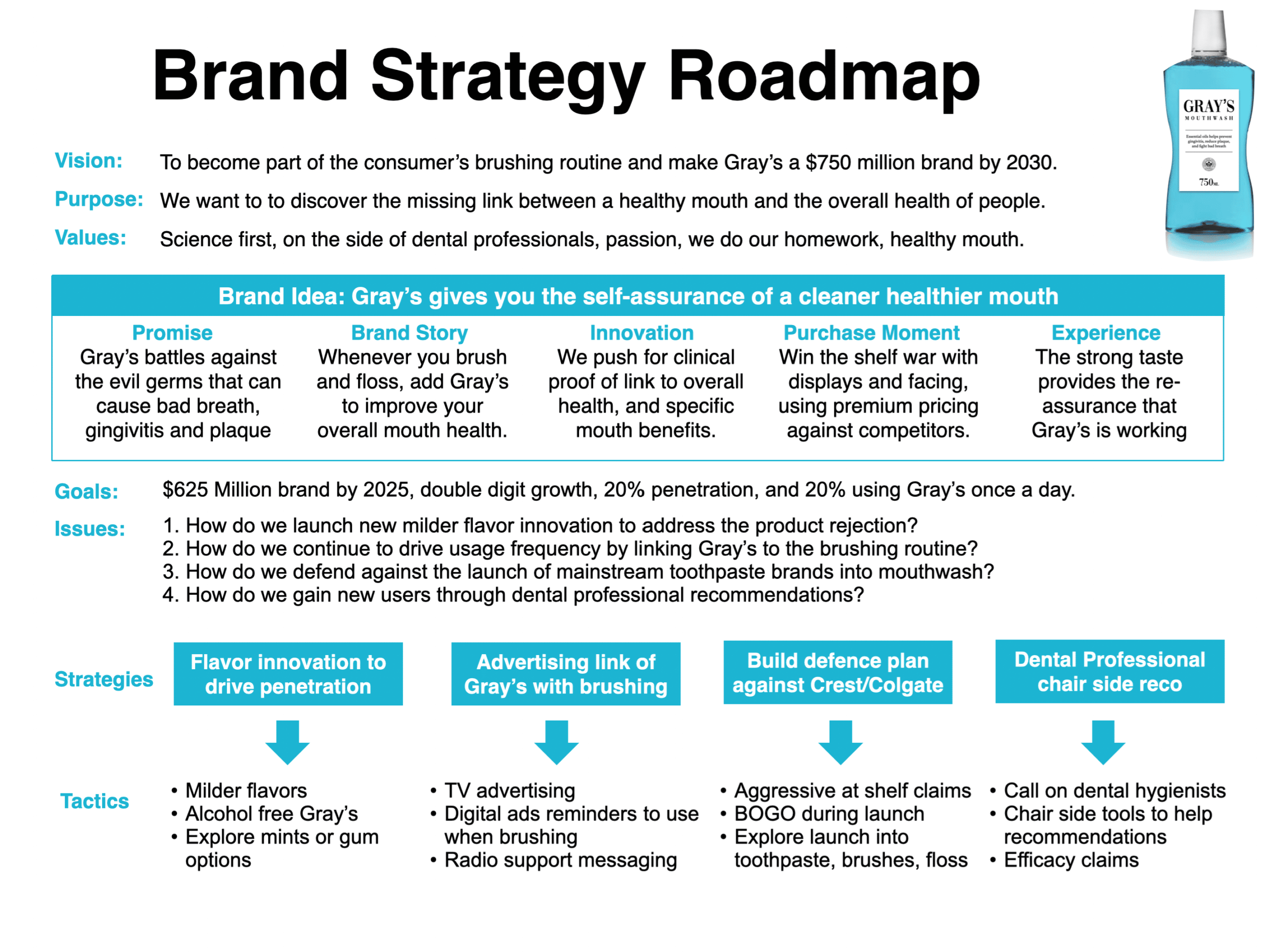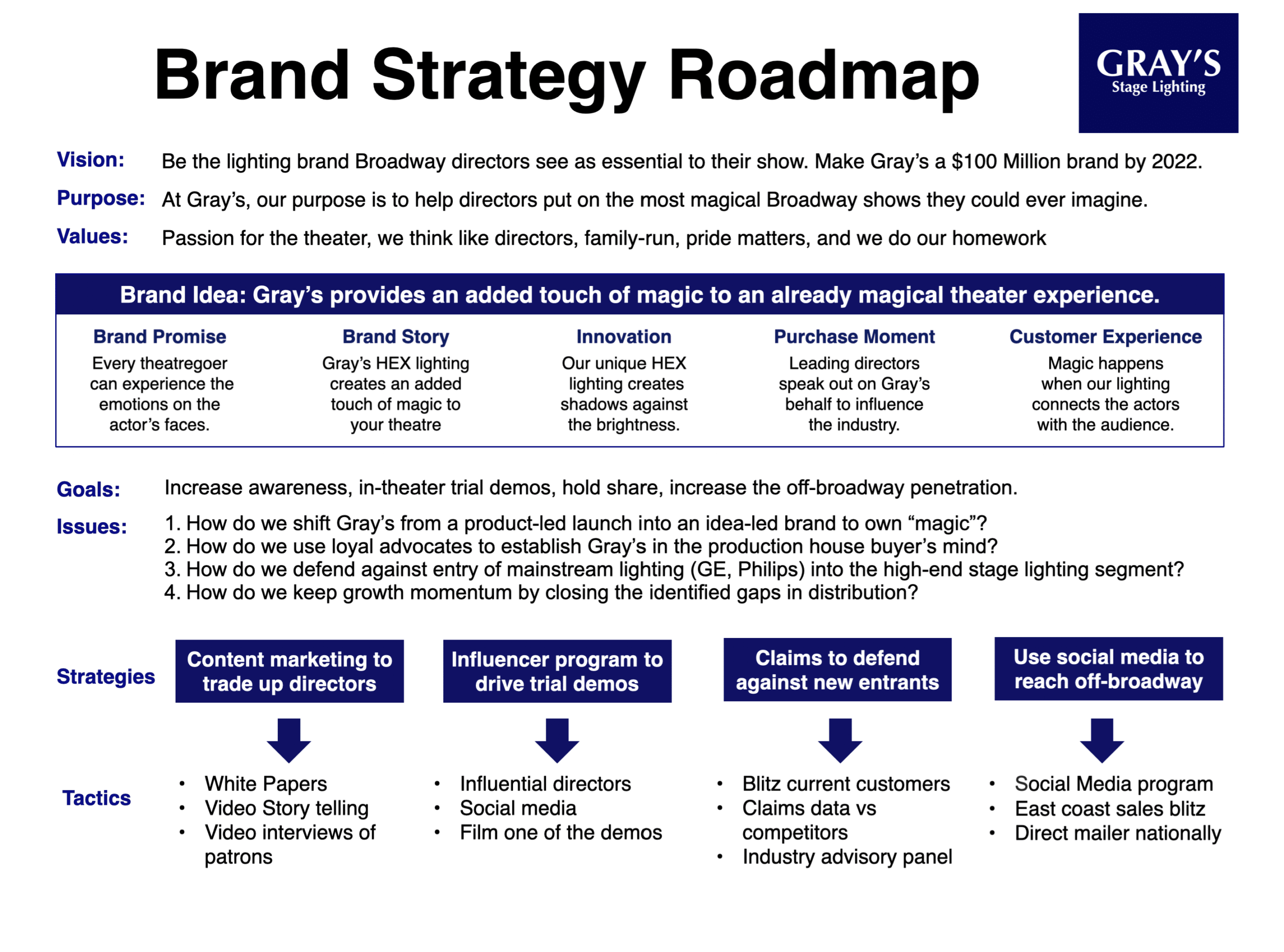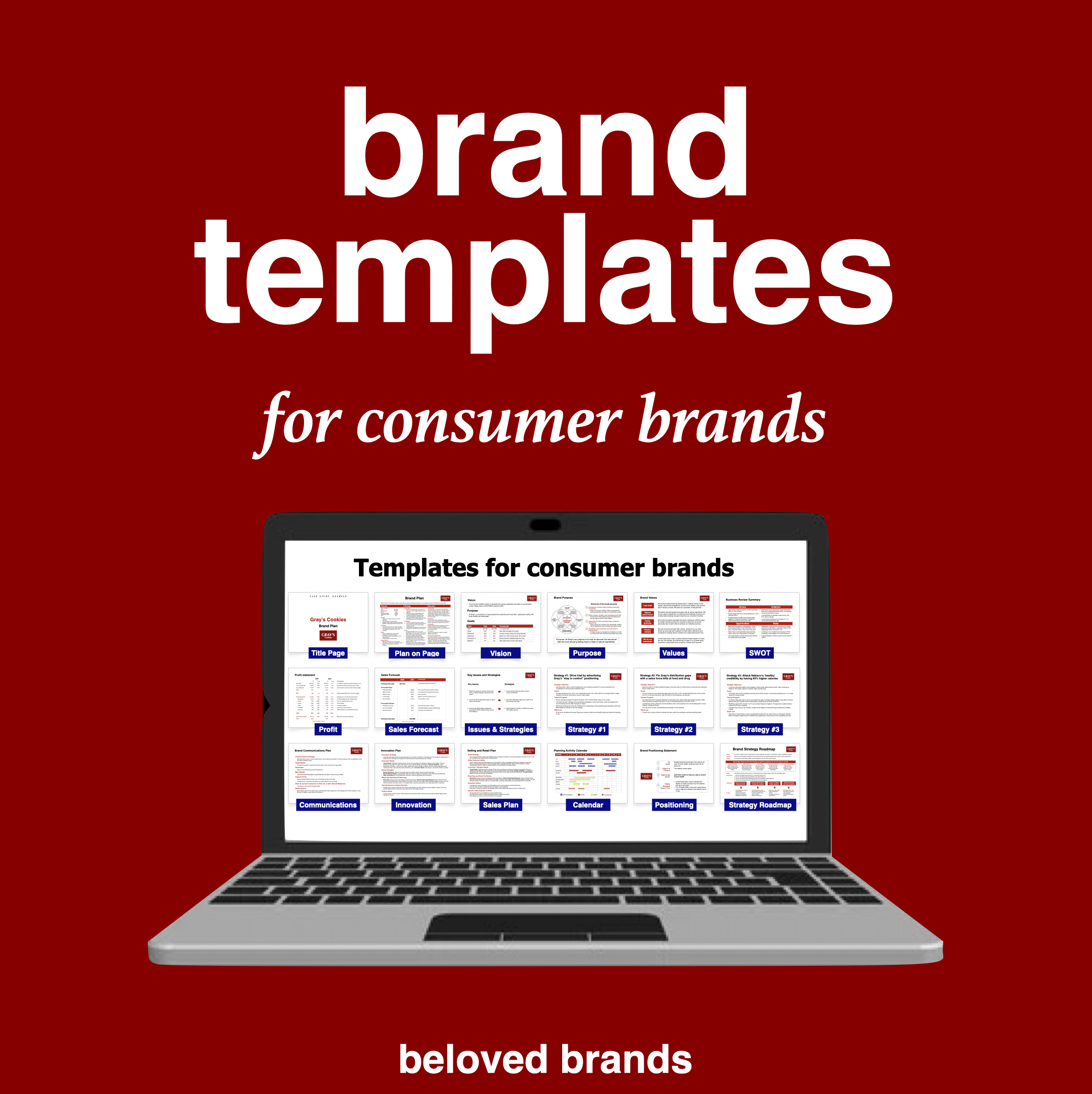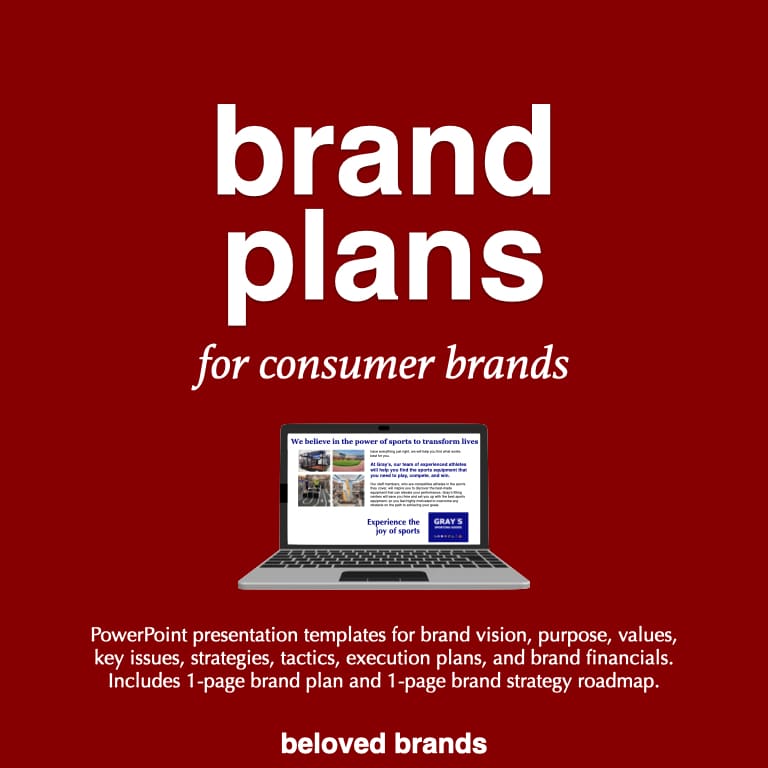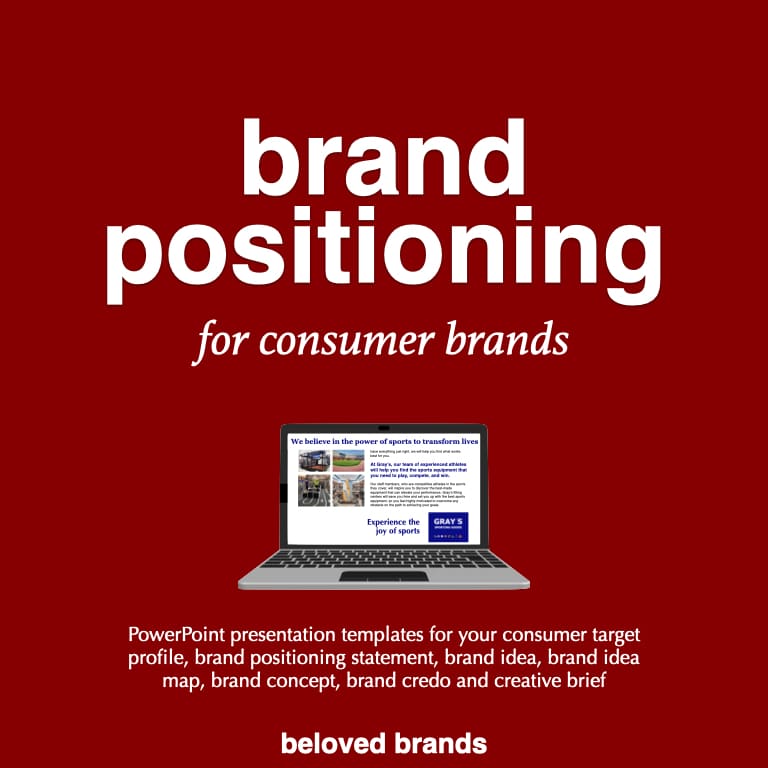Brand strategy decisions must answer, “How can we get there?” Most importantly, strategies must provide clear marching orders that define the strategic program you are investing in, the focused opportunity, the desired market impact, and the payback in a performance result that benefits the branded business. The strategic choices depend on market opportunities to build on your core strength, create a bond with consumers, battle competitors, or line up with your business situation. Every brand should have a long-range Brand Strategy Roadmap document that includes the vision, purpose, values, key issues, strategies, and tactics. Alternatively, some call it a long-range strategic plan or even a Strat Plan. Most importantly, get it onto one page!

Brand Strategy Roadmap - Table of Contents
What is Brand Strategy?
Brand strategy is built around the five elements of strategic thinking: vision, investment in solidifying capabilities, focused accelerator, market impact, and performance result.
A brand strategy starts with a vision that sets aspirational stretch goals for the future that should be linked to a clear result or purpose. The vision should steer everyone who works on the brand to focus on finding ways to create a bond with your consumers that will lead to power and profit beyond what the product alone could achieve. Imagine it is five or ten years from now, and you wake up in the most fantastic mood.
Key Issues define what is needed to achieve the vision.
Brands must examine the gap between the current trajectory and their aspiring vision. We use interruptive questions that frame the issues regarding what is in the way of achieving what you want. By raising those issues early on, you can focus the team on the significant problems to solve on the pathway to the stated vision. Keep asking questions at this stage.
For the strategy to take hold, we must structure the communication of our strategies with clear marching orders so everyone knows exactly what they need to do to deliver. As they cascade down, the CMO’s strategies frame their tactics, and those tactics become their managers’ strategic programs. Then, the manager’s tactics become the strategies of the execution specialists.
Brand Strategy = Program Investment + Focused Accelerator + Performance Result
With our strategies, we must think like the CFO who gives us the money. If marketing wants to be treated like an investment, we must act like investment managers for that CFO. We should describe our strategic programs as investments. And, we must focus on those consumers most likely to bounce back and understand the underlying market accelerators that explain why that investment is worth it and how it will make it work harder. We need to explain how our strategic program will move consumers in a way that leads to a performance result that makes our brand healthier and wealthier.
I find it frustrating watching everyone overcomplicate strategy. They mistakenly think strategy requires more intellect, so they use big, vague words when smaller, specific words work better.
Let’s simplify strategy.
Explain what program you will invest in. Then, outline who you will focus on, backed by an underlying accelerator for why you think it will work.
To simplify it, with each strategic program, you will do something that gets the consumer to do something that turns into an explainable result of what you get.
Brand strategy + Brand Idea
As well, the Brand Strategy Roadmap uses the brand idea to deliver a consistent brand across the five consumer touchpoints. These touchpoints that reach consumers include the brand promise, brand story, innovation, purchase moment, and consumer experience.
Your brand strategy should help build relationships with your stakeholders – employees, customers, suppliers, and community leaders. Importantly, branding is an essential part of the business that needs to be aligned with the business goals.
To illustrate, click to zoom in on our brand strategy roadmap process.
Strategic Plan template - getting your strategy on one-page
There is an advantage to getting your long-range strategic plan down to one page. First, while a PowerPoint presentation makes sense to gain approval from senior management. The reality is that no one will look at your plan a second time. Printing binders is a waste of time. Putting it on the share drive does nothing. Instead, having a one-pager allows everyone who works on the brand to keep it close to them, whether pinned to the wall near their desks or in their brief case.
Vision:
First, the vision in the brand strategy roadmap should answer the question, “Where could we be?” Put a stake in the ground that describes an ideal state for your future. It should be able to last for five to 10 years. Essentially, the vision gives everyone clear direction. Most importantly, the vision should motivate the team. Write the vision in a way that scares you a little but excites you a lot. Importantly, the vision steers the long-range strategic plan.
Brand purpose:
Next, the purpose has to answer the question, “Why does your brand exist?” It’s the underlying personal motivation for why you do what you do. Furthermore, the purpose is a powerful way to connect with employees and consumers, giving your brand a soul.
Values:
Then, layer in values that should answer, “What do you stand for?” Your values should guide you and shape the organization’s standards. Values connect your beliefs, behaviors, expectations, and motivations. Above all, the brand must consistently deliver each value.
Goals:
Your goals in the brand strategy roadmap should answer, “What will you achieve?” For example, the specific measures can include consumer behavioral changes, metrics of crucial programs, in-market performance targets, financial results, or milestones on the pathway to the vision. Accordingly, your goals set up a brand dashboard or scoreboard.
Key issues:
The key issues answer the question, “Why are we here?” Look at what is getting in your way of achieving your brand vision. Then, ask the issues as questions. Moreover, these strategies are the answer to each issue.
Brand Strategies:
Next, use your brand strategy decisions to answer, “How can we get there?” Your choices depend on market opportunities with consumers, competitors, or situations. Notably, the strategies must provide clear marching orders. Above all, the brand strategy defines the strategic program you are investing in, the focused opportunity, the desired market impact, and the payback in a performance result that benefits the branded business.
Tactics:
Finally, the tactics answer, “What do we need to do?” Framed entirely by strategy, tactics become action plans with clear marching orders to your teams. Decide which activities to invest in to stay on track with your vision. The best ideas must deliver the highest ROI (return on investment) and ROE (return on effort). Finally, with a long-range strategic plan, you don’t have to get too specific with the tactics.
Organizing brand idea
Your brand idea is at the heart of your brand strategy
When we help find your brand strategy, we use a brand idea to represent the inner brand soul of everyone who works on the brand, inspiring employees to deliver the brand promise and amazing experiences. Importantly, the brand strategy must be ownable so no other competitor can infringe on your space, and you can confidently build your brand reputation over time. Equally, make sure this work is based on your brand positioning statement.
To illustrate, click to zoom in on our brand idea.
Brand Strategy brainstorm
In stage one of finding your brand strategy, we hold a keywords brainstorm for each of the five areas. To start, brainstorm 20-30 words that describe each of the five elements of the brand idea.
Next, in stage two, we turn keywords into key phrases for each of the five areas. Then, get the team to vote to narrow down the list to the best 3-5 words for each section. You will begin to see certain themes and keywords. Take those selected words and build phrases to summarize each section.
To illustrate, click to zoom in on our brand idea brainstorming.
In stage three of our brand strategy workshops, summarize everything to create a brand idea.
Once you have phrases for all five areas of our brand strategy model, the team should feel inspired to use their creative energy to develop the brand idea. Importantly, find a summary statement that captures everything around the circle. Try to get a few options you can test with consumers and employees.
Once you have the brand idea, create a brand idea map to steer everyone who works on the brand
We use our Brand Idea Map to stretch the brand idea across all consumer touchpoints. And, we include the brand promise, brand store, new product innovation, purchase moment, and the consumer experience.
To illustrate, click to zoom in on our brand idea map process.
Brand promise:
The brand idea must inspire a simple brand promise that separates your brand from competitors. Essentially, position your brand as better, different, or cheaper.
Brand story:
When you use a brand story to bring the brand idea to life, it helps motivate consumers to think, feel, or act while it works and establishes the ideal brand’s reputation to be held in the minds and hearts of the consumer. Above all, the brand story aligns all brand communications across all media options.
Innovation:
Using the brand idea to build a fundamentally sound product helps stay at the forefront of trends and technology to deliver innovation. Furthermore, steer the product development teams to ensure they remain true to the brand idea.
Purchase moment:
Using the brand idea to move consumers along the purchase journey to the final purchase decision helps align the sales team and set up retail channels.
Consumer experience:
Finally, turn the usage into a consumer experience that becomes a ritual and favorite part of the consumer’s day. As a result, the brand idea guides the culture of everyone behind the brand who delivers the experience.
Example of a brand idea map
Below, we use our Brand Idea Map to stretch Gray’s Cookies’ “guilt free” brand idea across all consumer touchpoints.
Get everyone on the team to keep the Brand Strategy Roadmap and one-page brand plan handy.
What I recommend is to laminate two documents back-to-back. Having both documents on one page keeps everyone focused and aligned on what they must deliver. For more info on our one-page brand plan, click on this link: You will love our one-page Brand Plan
To illustrate, click on the Brand Strategy Roadmap and the one-page Brand Plan example.
To illustrate, click to zoom in on our B2B brand strategy roadmap example.
Brand Strategy Frequently Asked Questions - FAQ
What’s business strategy? What is a brand strategy?
Business strategy forces brands or companies to make choices that define how they will achieve their vision. The five elements of a brand strategy include the vision, investment choice, focused opportunity, market impact, and performance result. We use these elements to build out the brand strategy statement you can use in any plan.
Why brand strategy is important?
The brand strategy aligns the company with a few strategic investments. The brand strategy helps gain approval from senior management, including C-suite and CEOs. And a brand strategy roadmap steers everyone who works on the brand. While it provides the long-range elements such as brand vision, purpose, and values, it lays out the key issues, strategies, and tactics.
Our brand strategy roadmap also shows all those who work behind the scenes how to handle the execution against all the consumer touchpoints. This helps focus the brand’s look and feel, marketing communications, innovation, sales, operations, and culture.
Why have a brand strategy?
Every brand should have a long-range Brand Strategy Roadmap document that includes the vision, purpose, values, key issues, strategies, and tactics. Alternatively, some will call it a long-range strategic plan, a business strategy, or a Strat Plan.
Our brand toolkit for consumer brands is our most comprehensive template helps you communicate your brand plans, brand positioning, business review and creative briefs.
Our brand plan template offers slides for vision, purpose, analysis, key issues, strategies, and execution plans, ensuring a thorough approach to your brand’s development. The brand positioning template guides you through defining your target profile, crafting a brand positioning statement, and developing a unique brand idea, concept, values, story, credo, and creative brief. Finally, our business review template provides slides for in-depth analysis of the marketplace, customers, competitors, channels, and your brand.


